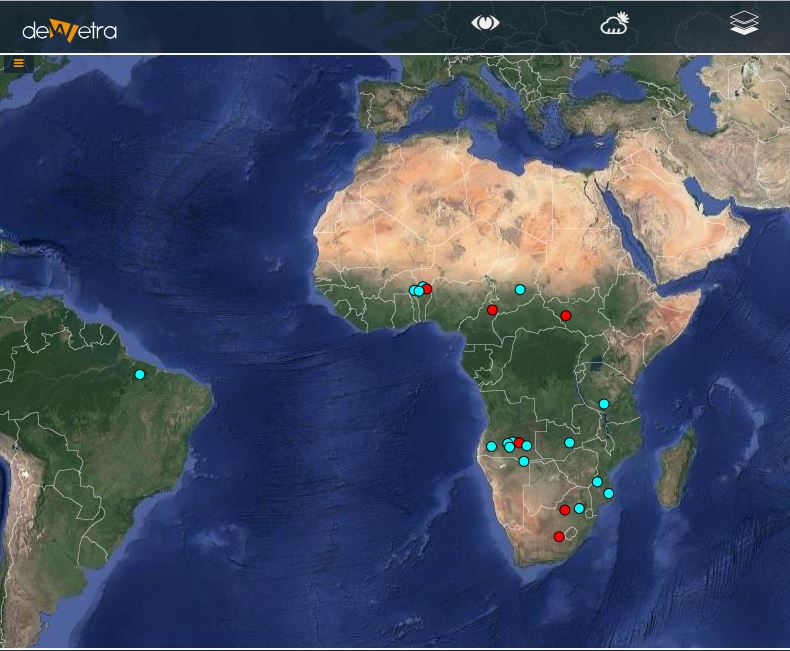Difference between revisions of "MSG SEVIRI(eng)"
| Line 1: | Line 1: | ||
| − | |||
| − | |||
| − | |||
[[User Guide | [Home]]] - [[Observations| [Observations]]] <br/> | [[User Guide | [Home]]] - [[Observations| [Observations]]] <br/> | ||
Revision as of 13:56, 16 November 2018
| Layer name | MSG IR 10.8 | |
| Tag | Fires | |
| Folder | ||
| Source | EUMETSAT | |
| Description | Active fire monitoring - Derivation of an active fire monitoring product from SEVIRI ought to be feasible, as
demonstrated by the GOES heritage. SEVIRI has the required key spectral bands, in the 3.9mm region and in the 10-12mm region, and also the visible and near infrared bands often employed in secondary tests for active fire detection. The actual benefit of such a product in support of fire fighting over Europe, where most of the starting fires tend to be quickly detected on the ground, can be questioned. However, there is currently a long delay between the end of a fire season and the availability of integrated, standardised statistics for the southern European countries. This situation creates an opportunity for a product capable of providing a timely overview of the unfolding of the fire season in the region. Data from this product might also be useful to evaluate the performance of fire risk assessment indices. More info at: MSG-SEVIRI documentation on line | |
| Screenshot | ||
| Properties | ||
| Available variables | FIRG (Fire-Grid), FIRG (Fire-Grid) rapid scan | |
| Available accumulations | ||
| Available interpolation algorithms | ||
| Available filters | ||
| Spatial aggregations |
